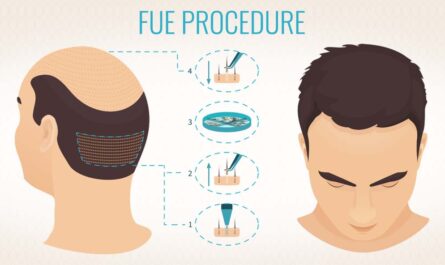Urban communities are diverse, vibrant, and culturally rich. Unfortunately, they also experience significant health disparities that are a growing concern. These disparities can be influenced by various factors such as socioeconomic status, race, ethnicity, and access to healthcare, among others.
To address these complex issues, it is crucial to implement strategies that have been proven effective in reducing health disparities and improving overall health outcomes.
While there is no one-size-fits-all approach to addressing health disparities, several strategies can be tailored to the specific needs of urban communities. Using these strategies, the city can work towards achieving health equity and creating an environment that promotes thriving for all residents.
Page Contents
1. Building partnerships with community organizations and health providers
Community-based organizations are essential in improving health outcomes by providing residents with education, support, and resources. They have a better understanding of the cultural and social norms that influence residents’ health behaviors, making them well-positioned to create interventions that address the root causes of health disparities. Local health clinics are necessary to improve access to healthcare services for underserved populations.
Developing partnerships with these community organizations and clinics help health departments reach needy populations and provide them with the necessary services and resources to improve their health.
2. Investing in health education and outreach efforts

Reducing health disparities in urban communities requires investments in health education and outreach programs. For these programs to be effective, skilled and knowledgeable professionals must be involved.
Urban education master’s programs can equip professionals with the skills to design, implement, and evaluate community-based health education initiatives. Professionals who have completed a program like this can design, plan, and evaluate community-based initiatives that can impact public health. Investing in these types of educational offerings is essential for creating outreach programs that are effective and beneficial for all members of the community.
It’s also important to recognize that many urban communities have diverse, multicultural residents with unique cultural backgrounds and languages. Making health education, outreach materials, and messages culturally appropriate is key to their effectiveness.
3. Addressing health disparities

The next step to addressing health disparities in urban communities is prioritizing health equity in policy and planning. It requires policymakers to take a comprehensive approach that considers all residents’ unique needs, especially those most in need. Increased funding for community health clinics, affordable housing initiatives, and improvements to access to healthy foods are all examples of policies that promote health equity.
A park or green space can also be prioritized as part of a city’s planning efforts in areas where outdoor recreational activities are unavailable. This can encourage physical activity and combat obesity. Additionally, ensure that policies are in place so that all people have access to quality health care, regardless of their income or level of insurance coverage.
4. Address the Root Causes of Health Disparities:
Addressing the root causes of health disparities in urban communities is a complex process that requires a multi-faceted approach. This can include poverty, inadequate housing, lack of access to healthy food options, and environmental pollution.
Resolving these issues involves policies that increase access to affordable housing, improve public transportation options, and regulate environmental pollution. Additionally, targeted interventions, such as food assistance programs, can help to ensure that all community members have access to healthy and nutritious food options.
5. Focus on Prevention and Early Intervention:

Many chronic health conditions, such as diabetes and heart disease, can be prevented or managed through lifestyle changes and early detection. Encouraging regular check-ups, screenings, and immunizations can help identify health issues before they become more severe and require more costly treatment.
Healthcare providers are key to prevention and assisting patients with early intervention. They can encourage patients to actively participate in their health by providing information on disease prevention, healthy living, and managing chronic health conditions. This can also involve working with patients to develop customized care plans tailored to their unique health needs and goals.
6. Encourage Healthy Behaviors and Habits:

Good health and well-being come from making healthy choices in life. It’s important to have access to affordable, safe environments for physical exercise as well – this is something that urban planning and design can help by creating pedestrian-friendly neighborhoods, bike lanes, parks, and green spaces. This makes it easier for people to be active, which benefits not only their physical but also their mental state!
Fitness and nutrition are also important for a healthy lifestyle. Nutrition classes, farmers’ markets, community gardens, and access to nutritious food options in stores can contribute to this goal. Additionally, by offering cooking lessons or making healthier meals available at restaurants, we encourage people to make the right dietary choices for their well-being.
7. Work to Reduce Environmental Health Risks:

Environmental perils, such as air pollution and contact with toxic substances, gravely threaten the health of urban citizens. As a result, cities need to reduce contamination and other harmful ecological conditions. This can be accomplished by implementing policies that contain industrial emissions, advancing viable transportation options, and addressing dangerous waste management.
Additionally, public health campaigns can focus on educating community members about the health risks associated with environmental pollutants and ways to minimize exposure.
8. Recognize and Address Systemic Racism and Discrimination:

Systemic racism and discrimination can significantly impact the health of urban residents, particularly those from marginalized communities. To address this issue, efforts can be made to recognize and address how racism and discrimination contribute to health disparities. This can involve policies that promote diversity and inclusion, address social determinants of health, and provide resources to support community-led initiatives.
Additionally, community members can be involved in addressing racism and discrimination through education, advocacy, and community organizing.
9. Evaluate the effectiveness of interventions
The evaluation of interventions is key to ensuring that resources are being used effectively and that desired outcomes are achieved. Evaluating interventions involves assessing the impact of a particular program, policy, or strategy on the target population. An evaluation can help determine whether an intervention effectively achieved its goals and identify areas for improvement.
Interventions can be evaluated in several ways. Health behaviors, knowledge levels, and health outcomes are among the indicators that can be collected through surveys. An alternative approach is to use randomized controlled trials to assess an intervention’s impact.
Conclusion
Addressing health disparities in urban communities requires a multifaceted approach. A key component is investing in health education, outreach, addressing the causes of health disparities, promoting early intervention and prevention, and encouraging healthy behaviors. All parties involved must recognize that this is a long-term goal. Together, they can create healthier and happier communities by working towards equity and systemic change.






